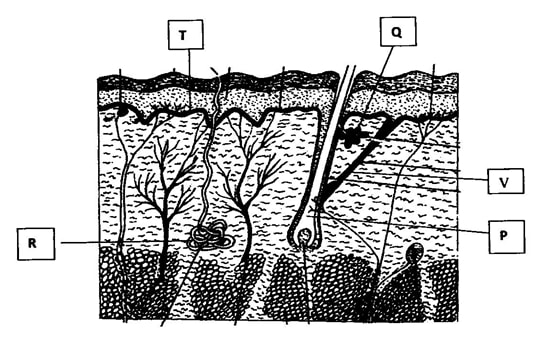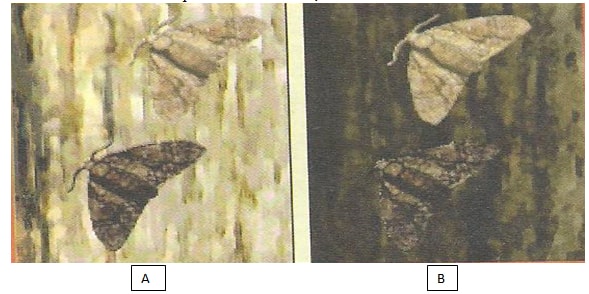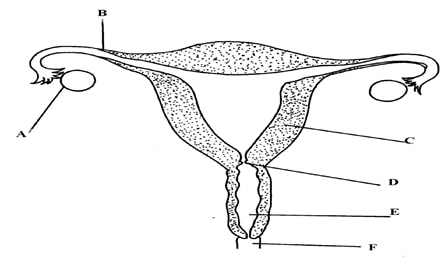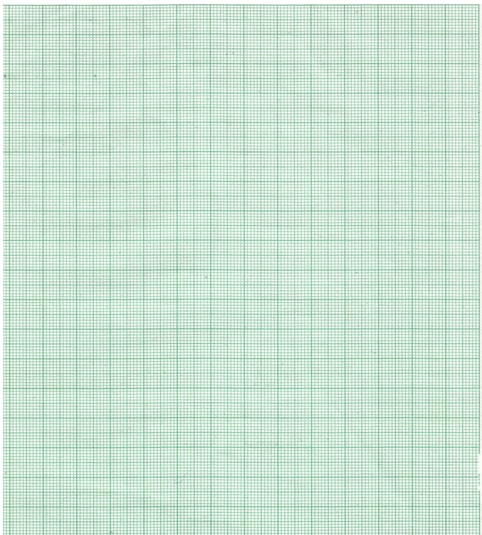INSTRUCTIONS
- Answer all the questions in Section A in the spaces provided.
- In section B answer questions 6 (compulsory) and either question 7 or 8 in the spaces provided
SECTION A (40 Marks)
- Below is a diagram of a mammalian skin, use it to answer the questions that follow.

- Name the parts labelled P, Q, R (3mks)
P……………………
Q……………………
R…………………… - Give the function of the parts labelled Q and T (2mks)
Q……………………
T…………………… - Briefly explain how the part labelled R contribute to lowering of body temperature on a hot day. (2mks)
- Give one function of the mammalian skin other than thermoregulation. (1mk)
- Name the parts labelled P, Q, R (3mks)
- Form two students subjected an orange plant growing outside the laboratory to the Following;
- Selected two sized leaves and gently brushed them clean on both sides.
- Placed two strips of dry cobalt chloride paper on both sides of each leaf and opposite each other and covered the cobalt chloride papers with cello tape.
They observed the time taken for any colour change to occur and recorded the following.
Use the above information to answer the following questions.Side of leaf
Upper epidermis
Lower epidermis
Time taken
5 minutes
2 minutes
-
- What was the aim of the above experiment. (1mk)
- What was the purpose of brush cleaning the leaf (1mk)
- What was the role of cello-tape in this experiment? (1mk)
-
- What was the original colour of dry cobalt chloride paper. (1mk)
- What colour change did the students observe? (1mk)
- Explain the difference in time taken for the colour change observed. (3mks)
-
- Red-green colour blindness is controlled by a sex-linked gene. The allele for normal sight is represented by letter C and of colour blindness is represented by letter c. A carrier female is married to a colour blind male.
- What is sex linked gene? (1mk)
- Write down the genotype of the parents. (2mks)
- Work out the F1 genotypes. (4mks)
- What is the percentage of colour blind sons in all the male offspring’s (1mk)
- The photographs below are of organisms resting on different environmental backgrounds.
Observe them and answer the questions that follow;
- Name the aspect of evolution depicted in the photograph (1mk)
- Explain the phenomenon. (4mks)
- How do we refer to this concept mentioned in (b) above. (1mk)
- State any four other evidences of the phenomenon in (a) above in the modern World. (2mks)
- The diagram below represents female reproductive system;

- Name the part labelled A, B, C and D (4mks)
- State two functions of structure A (2mks)
- How is part C adapted to its function? (1mk)
- Of what significance is part E to reproduction? (1mk)
SECTION B (40 Marks)
Answer question 6 (Compulsory) and either question 7 or 8 in the spaces provided.
- A research was carried out to determine the trend of growth for some boys and girls. Their average mass in kilograms was taken separately for a period of 20 years and tabulated as shown in the table below.
Age
Average Mass of boys (kg)
Average mass of girls (kg)
0
2.5
2.5
2
11.1
11.5
4
15.0
16.0
6
18.5
19.3
8
22.1
27.1
10
25.1
27.1
12
27.5
30.5
14
37.0
35.5
16
44.0
44.0
18
46.9
52.5
20
48.5
55.0
- On the same axis draw a graph of average mass of girls and of boys against the age. (7 mks)

- From the graph , determine the;
- Mass for boys at age of 11 years. (1mk)
- Growth rate in girls between ages 13 and 15 (3mks)
- Account for the change in the mass of girls during the age stated in (ii) above. (2mks)
- Explain the trend observed in the curves for both boys and girls. (2mks)
- Why do girls above 10 years require intake of food that is richer in iron than boys of the same age. (1mk)
- Mention two other factors apart from the diet that affect the rate of growth in boys and girls. (2mks)
- Apart from using average mass to estimate growth in human beings, name two other parameters that can be used. (2mks)
- On the same axis draw a graph of average mass of girls and of boys against the age. (7 mks)
- Explain how the following plants are adapted to their habitats.
- Xerophytes (14mks)
- Halophytes. (6mks)
-
- Describe the mechanism of inhalation in man. (8mks)
- State three factors affecting breathing rate in human beings. (6mks)
- Describe how the brain regulates breathing. (6mks)
Download BIOLOGY PAPER 2 - 2019 KCSE Prediction Questions Set 2.
Tap Here to Download for 50/-
Get on WhatsApp for 50/-
Why download?
- ✔ To read offline at any time.
- ✔ To Print at your convenience
- ✔ Share Easily with Friends / Students

